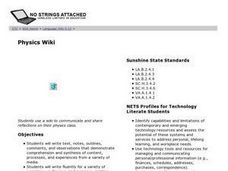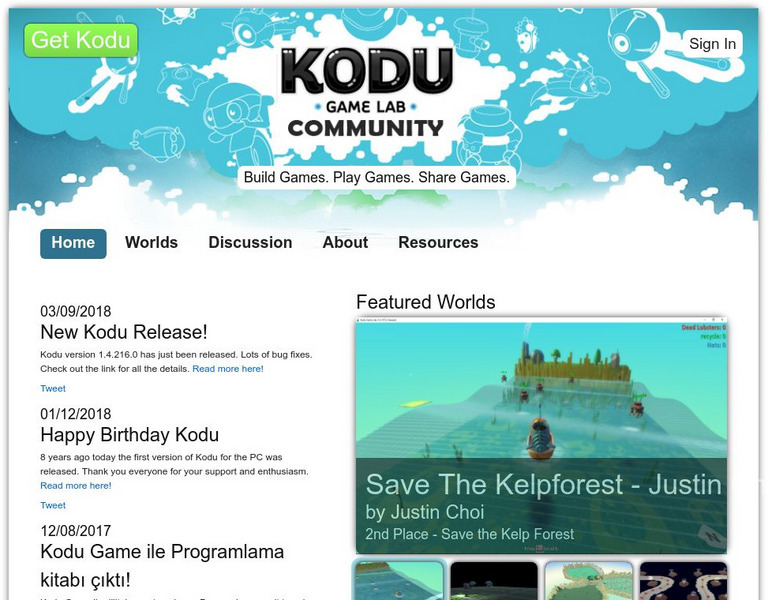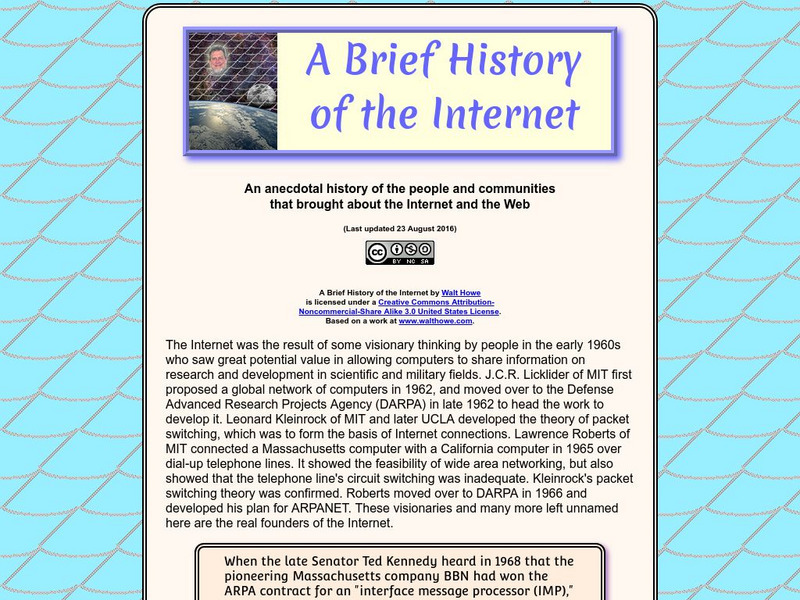Curated OER
Weather is Cool, Hot or Somewhere In-Between
Students access the Internet to record data on weather. They use email to answer a younger classes' questions about the weather.
Curated OER
Supporting the Classics!
High schoolers identify the basic forms of classical architectural columns. Using the internet, they note the physical differences between Corinthian, Doric and Ionic columns. They design their own temple to their favorite Greek god or...
Curated OER
Cultural Corner- "Mexico"
Young scholars use print and electronic resources to gather information about Mexico. They present a mini-museum to share with students, parents, and other interested classes around the district. They present their information in a video...
Curated OER
Go For the Gold! For Grades 3-5
Students use web technology to investigate ancient Greece and the Olympic Games. They explore the history of the Olympics. Students make connections between Greek and English. They make and record a persuasive speech and write a...
Curated OER
Website Scavenger Hunt
Young scholars use the internet to complete a species scavenger hunt. In groups, they answer questions given to them about sea lions, rockfish and killer whales. As a class, they identify any questions they have and discuss the role...
Curated OER
Non-Objective Constructed Sculpture
Students begin their examination of non-objective artwork. Individually, they participate in activities in which they take designs within other images and use them for their focus in their art. They create a sculpture with the new...
Curated OER
How to Choose Articles
In this language arts worksheet, students read detailed information that helps students choose correct articles in their writing. Students learn about nouns that refer to one unique thing, countable nouns, uncountable nouns, proper nouns...
Curated OER
Class Action
Students design learning laboratories for their school in a variety of subject areas. They present their ideas to members of their community for feedback.
Curated OER
Should Kids Vote?
Students develop critical analysis skills important to evaluate democratic structures. They increase their knowledge of the characteristics of voters and voting impact on the Electoral System.
Curated OER
Physics Wiki
Students write text, notes, outlines, comments, and observations that demonstrate comprehension and synthesis of content, processes, and experiences from a variety of media in this lesson created for a Physics classroom. The main lesson...
Curated OER
We're On A Mission!
Students examine the Mars Exploration Rover mission. In groups, they design their own mission while participating in a webquest. They write an essay using the information they gathered to propose their mission to the President. They...
Curated OER
Welcome Bags
Students identify ways to make new students feel welcome. In this new students lesson, students work with school guidance counselors to identify ways to welcome new students to their school. Students create welcome bags for the new...
Other
Microsoft Research: Fuse Labs: Kodu Game Lab
Using an artistic visual language, Kodu helps students create a world and an actual video game within that world. Learn basic coding and programming principles. Download the game lab or teacher lesson plans for free.
National High Magnetic Field Laboratory
Magnet Academy: Timeline of Electricity and Magnetism: 1940 1959
Defense-related research leads to the computer, the world enters the atomic age and TV conquers America.
University of Utah
University of Utah: Aspire: The Aspire Breadboard
This is a tutorial for creating a breadboard with an LED display as an educational outreach effort for the Telescope Array cosmic ray research project near Delta, Utah. When completed, the breadboard could be programmed to use actual...
National High Magnetic Field Laboratory
Magnet Academy: Timeline of Electricity and Magnetism: 1960 1979
Computers evolve into PCs, researchers discover one new subatomic particle after another and the space age gives our psyches and science a new context.
Other
Denison University: Physics of Dance
The researchers in this study set up a mobile lab including six 3D cameras, three laptops, and 70 luminescent markers. Volunteer dancers were prepped with the markers before turning in front of the cameras, which flash infrared light to...
Other
Internet Learning Tree: A Brief History of the Internet
An anecdotal history of the people and communities that brought about the internet.



















